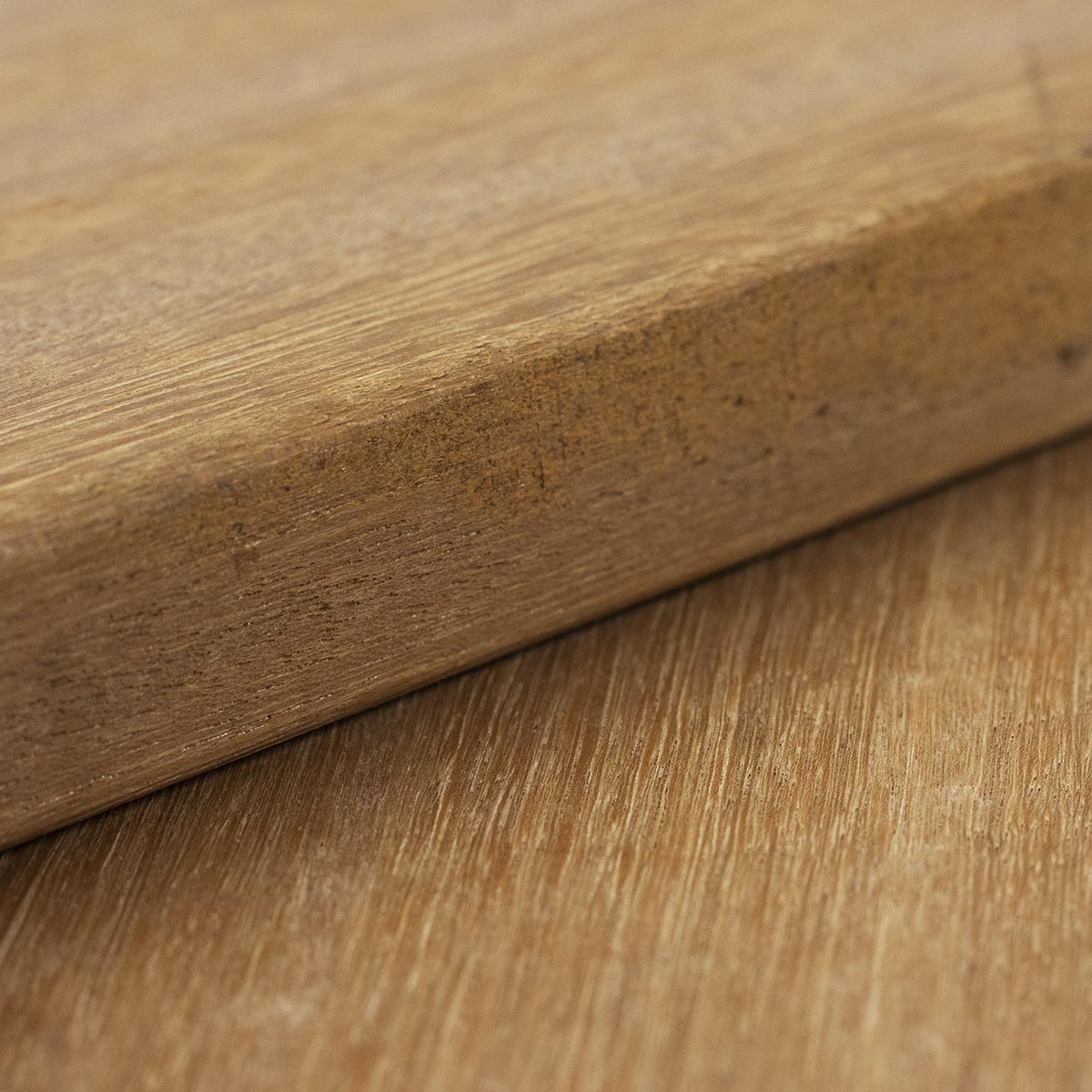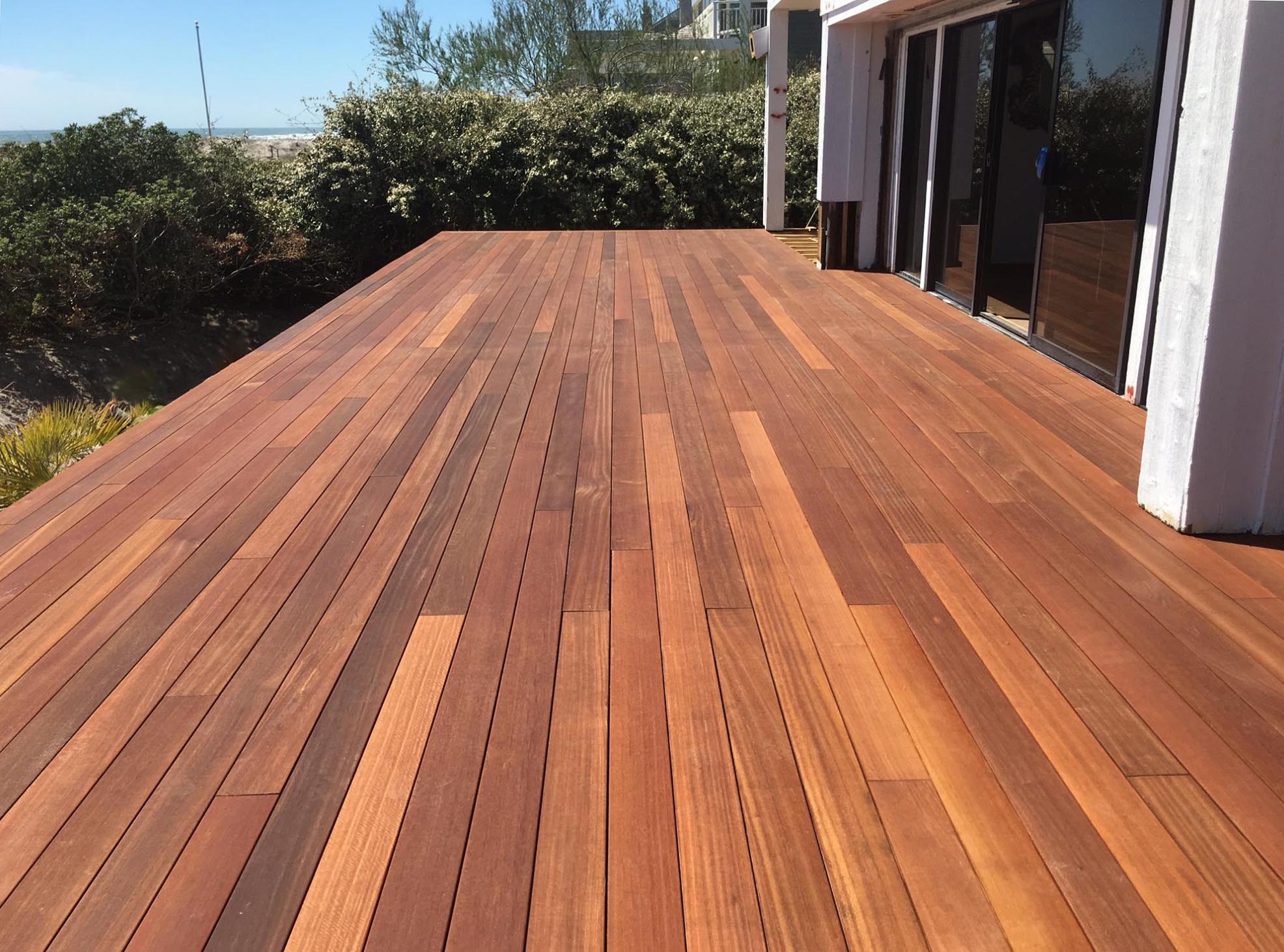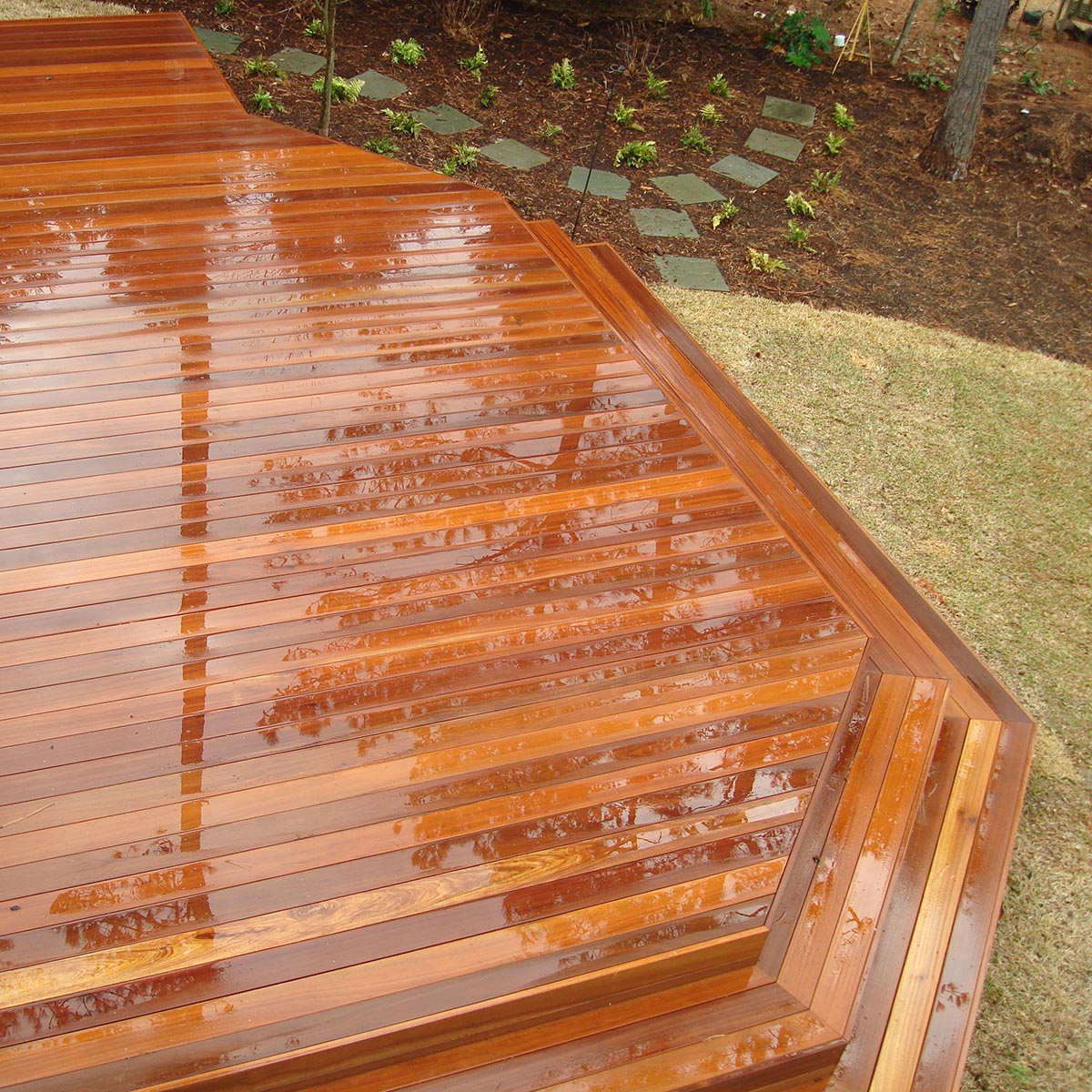Ipe Decking vs. Bangkirai Decking | A Definitive Comparison

BANGKIRAI, GOLDEN BALAU

BANGKIRAI, GOLDEN BALAU
Why Should We Be Looking Towards Ipe Alternatives?
Ipe has been a long standing first choice for many consumers for outdoor decking due its great looks, high hardness and strength, and its minimal movement. However, with this material in increasingly high demand, availability has dramatically decreased and the cost has soared. It is clear that we need to start looking at high grade alternatives to Ipe.
Because Ipe has had lasting popularity, over harvesting of this species has become an apparent issue. It is critical that harvesting diversifies among species to relieve the strain on Ipe. With carefully regulated and ethical harvesting practices, we can sustain hardwood as an exceptional building material forever. One of these carefully regulated alternatives to Ipe is Bangkirai aka Yellow Balau.
Bangkirai Increasing In Popularity
Also known as Bangkirai, Yellow Balau is commonly harvested in Malaysia and Indonesia. Bangkirai has many great qualities that make it a great choice for decking material. This gorgeous hardwood is known for its consistent and even texture, meaning it’s almost entirely blemish and knot free. This makes for a long lasting, consistent appearance with very limited required maintenance. This also makes it an ideal wood for creating the required groove patterns for decking because you will rarely run into defects in the wood. Just like Ipe, Bangkirai is resistant to decay, insect infestation and overall a very high grade hardwood.

BANGKIRAI, GOLDEN BALAU
Is The Extra Cost Of Ipe Actually Worth It?
When looking at Ipe vs. Bangkirai, it's easy to immediately convince yourself that Ipe is absolutely better. But, is the cost to benefit ratio balanced? When looking for quality decking, there’s four important factors: cost, availability, durability, and environmental impact. As mentioned before, Ipe is quickly becoming incredibly over-harvested which has led to extremely limited availability. Since the popularity of Ipe continues to fuel the demand, the cost has also become inflated. On average, Bangkirai currently costs 30-40% less than Ipe. This cost difference is not a reflection of quality but rather one of availability.
When we look at the data in the chart above, we can see Ipe does have the highest density, hardness, strength, and stiffness - that is undeniable. But Bangkirai is more than adequate for nearly all applications. Just like Ipe, Bangkirai has a 50+ year life expectancy for your deck. If your deck is properly installed and cared for, you can likely extend its life even farther.
Kiln Dried or Air Dried?
All Bangkirai should absolutely be kiln dried for decking use. Kiln dried hardwood stabilizes the wood, eliminates checking from air drying, and eliminates insects that could be lingering. Even though this may seem like an extra step in the process, it significantly increases the quality and longevity of the wood, which in turn helps reduce excess harvesting.
Stability Defined by Shrinkage Rates
US Dept. of Agriculture Handbook No. 207
US Dept. of Agriculture Handbook No. 72, pp 3-15
Another important factor to look at is shrinkage rates. The chart above shows the average shrink rates as percentages in the radial and perpendicular directions as well as the differential shrinkage and the overall volumetric shrinkage. When you look at his data set, it may appear that Ipe is the most dimensionally stable. However, it is important to note that the Yellow Balau we provide is primarily quartersawn. Quartersawn wood creates consistent growth ring orientation throughout the boards in relation to the cuts and therefore controls the critical expansion direction. It also reduces twisting, cupping, and warping and makes radial shrinkage the significant factor. In practice, Bangkirai actually has less shrinkage than Ipe in the radial direction which makes it more stable if sawn in this method.
By orienting the grain vertically, as is the case in quartersawn lumber, the larger shrinkage percentage is isolated to the thickness of the deck boards, and the lower shrinkage percentage is across the width of the deck boards. A Bangkirai deck will therefore have less movement in the widths of individual boards throughtout the seasons when compared to an Ipe deck.
So What’s the Verdict?
Let’s bring this back to what we believe are the four most important factors when picking a hardwood: cost, availability, durability, and most importantly, environmental impact. Bangkirai is widely available because it is both carefully and ethically harvested. These factors help keep the cost low for the consumer. Especially when compared to Ipe which is frequently unavailable in North American markets today and whose costs have more than doubled over the course of the COVID pandemic. In the end, Bangkirai is a gorgeous, affordable and durable wood that can last a lifetime. If you’re looking for an Ipe alternative, look for Bangkirai.

BANGKIRAI AFTER RAINSTORM
























